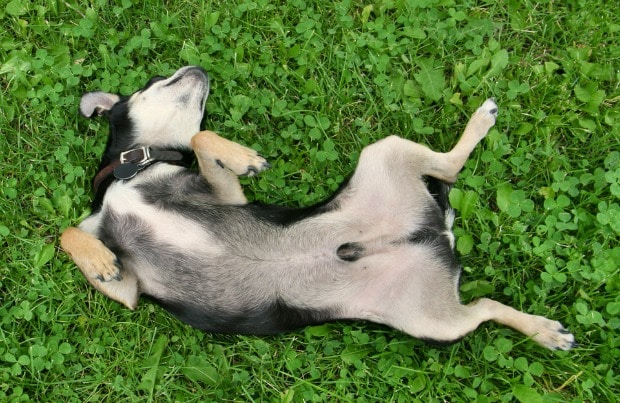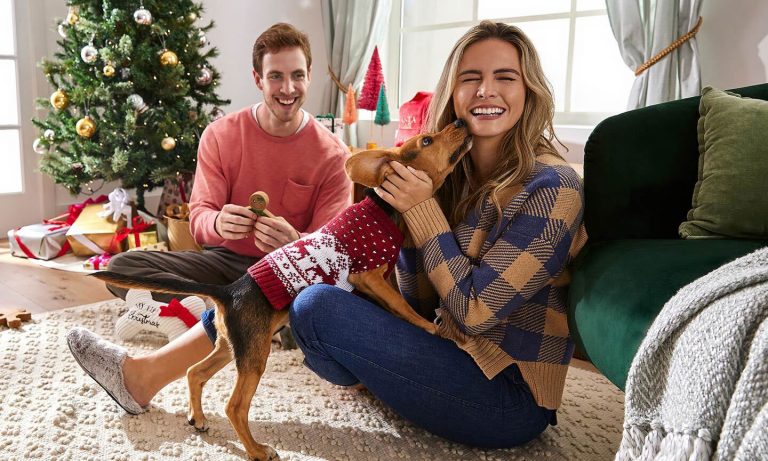It’s a question most dog parents probably never thought of before, but now you won’t be able to get it out of your head: Does my dog have a belly button? Those who gaze at their own navels (is yours an ‘innie’ or an ‘outie’?) may have briefly contemplated the existence of belly buttons in their pets, but hesitated to ask their own vets to confirm what they fear is a silly thought.
For some authoritative 411 on belly buttons, we reached out to Dr. Margret Casal, Associate Professor of Medical Genetics at the University of Pennsylvania School of Veterinary Medicine. She graciously offered to unbutton the mysteries on this point of animal anatomy.
Do Dogs Have Belly Buttons?
As it turns out, dogs do indeed possess belly buttons, as do cats, rabbits, goats, horses and, of course, humans.
“All mammals have a belly button (i.e. navel, umbilicus) with the exception of marsupials (like kangaroos) and egg-laying mammals such as the duck-billed platypus,” Casal says. “The belly button is the remnant of the attachment point of the umbilicus, which was attached to the placenta before birth. This is how nutrients and oxygen are transported to the fetus and waste products transported off.”
After they give birth, dogs (and other animals) will chew their puppies’ umbilical cords off a few inches away from their bodies. The cord is then left to dry and falls off within the first one to three days of life, says Casal. If you’ve been around a dog who’s given birth and noticed a skinny, stick-like thing coming from her pups’ stomach area, no need to fret. Casal says that the body wall heals very well and a small, flat scar (their belly button) is all that is left.
Why Can’t We See a Dog’s Belly Button?
“There are several theories as to why the belly button is not as prominent as it is in humans, one being that we tie the umbilical cord off rather than chew it apart,” she said. “While our belly buttons remain visible reminders of our arrival in the world, in animals, the little scar remnant that is the belly button is covered by fur as the it grows.”
If you do see an ‘outie’ in a puppy, it is considered a hernia even, if it is small and there are no internal organs trapped inside (which is the case in most hernias), Casal said.
Kathy Blumenstock is owned by cats, loved by dogs, writes about both, and still longs for a horse.
Share:









